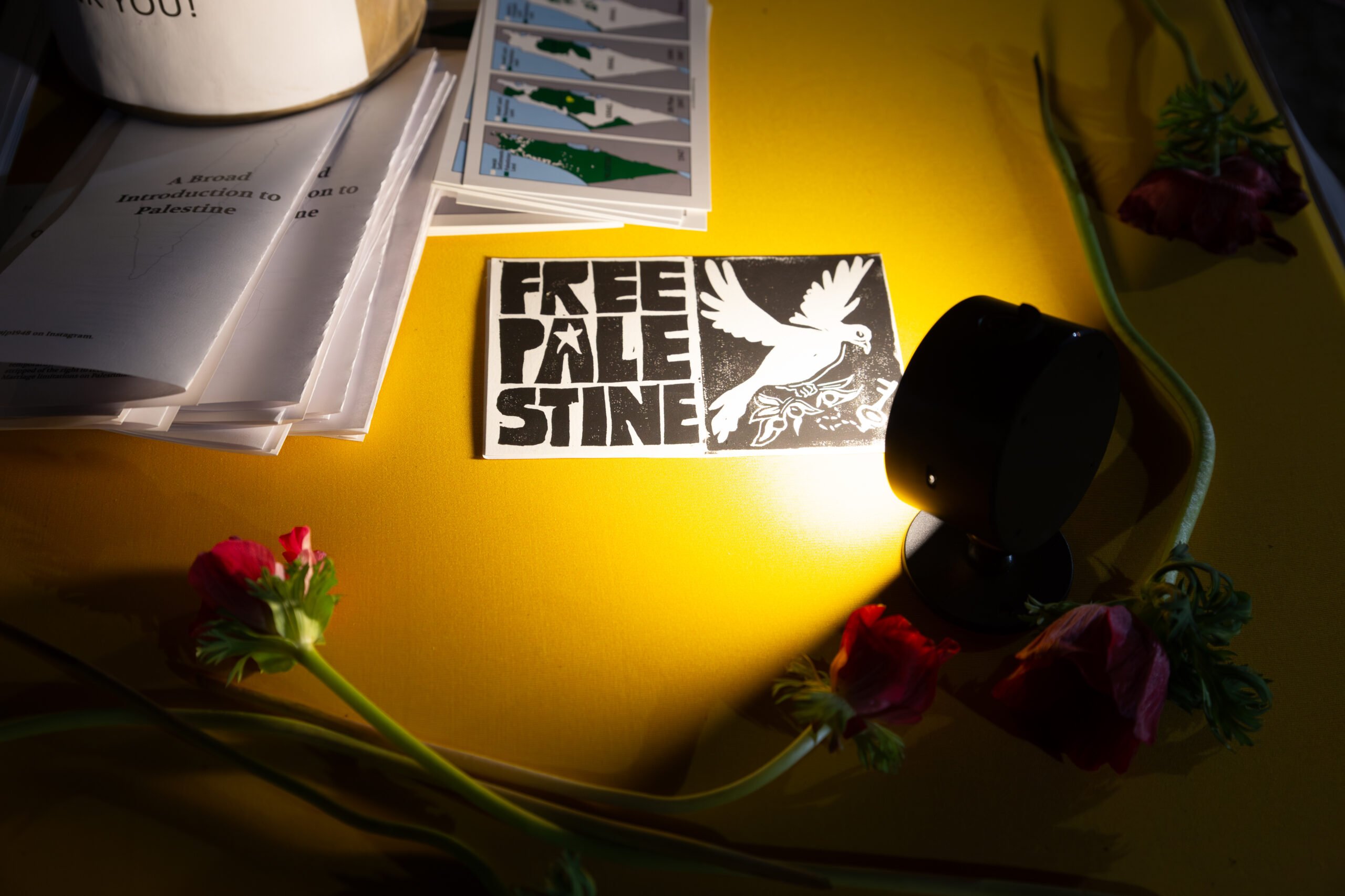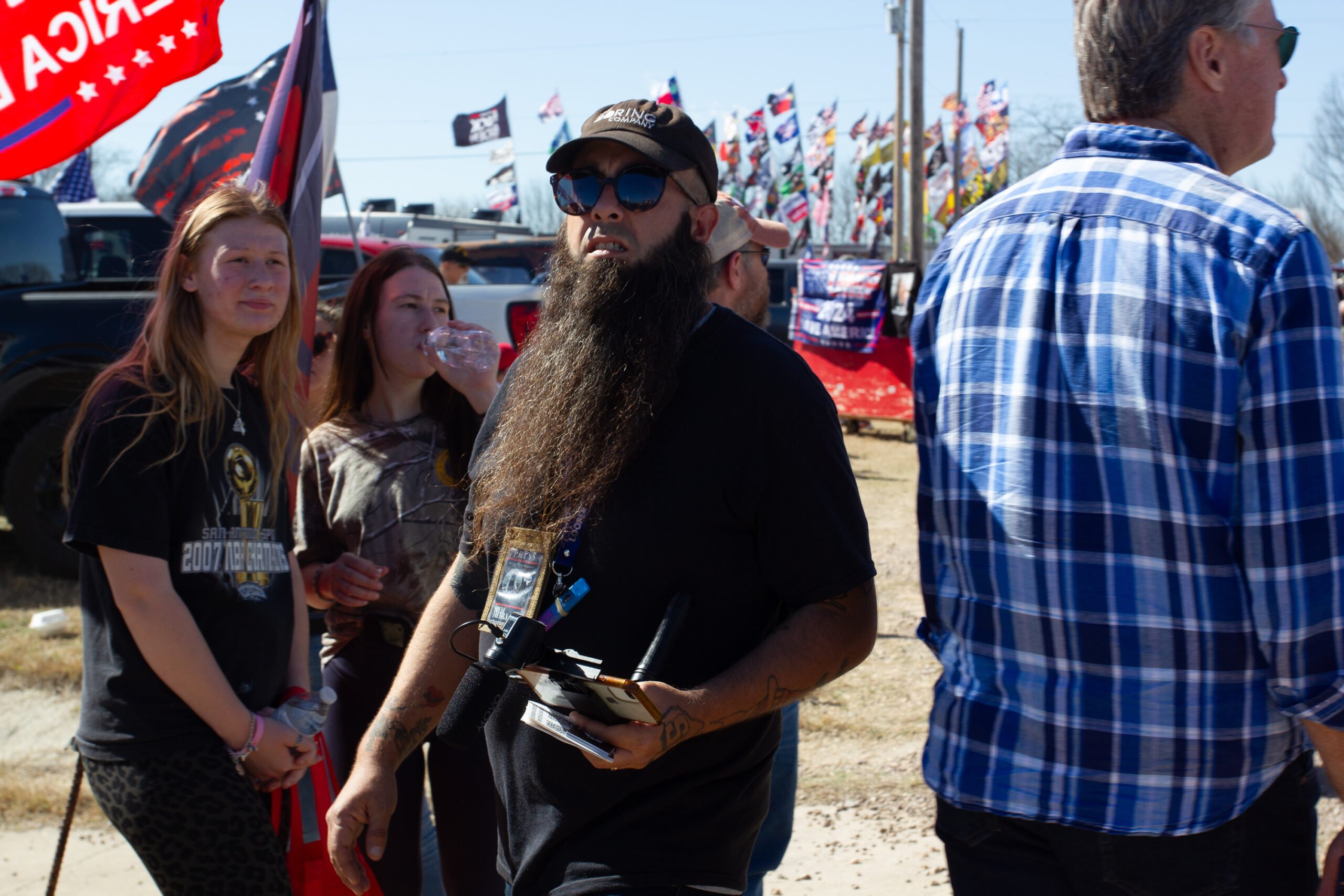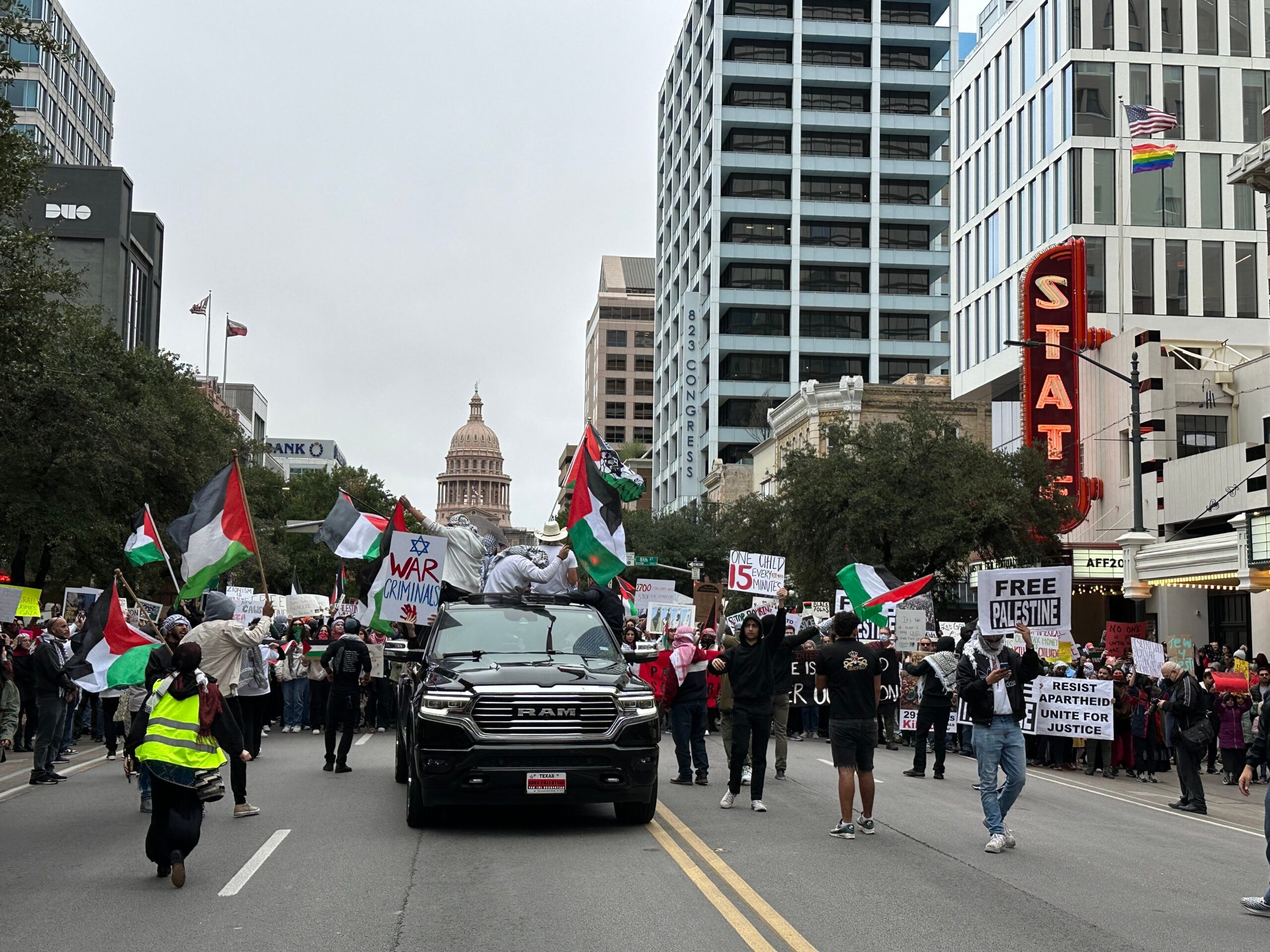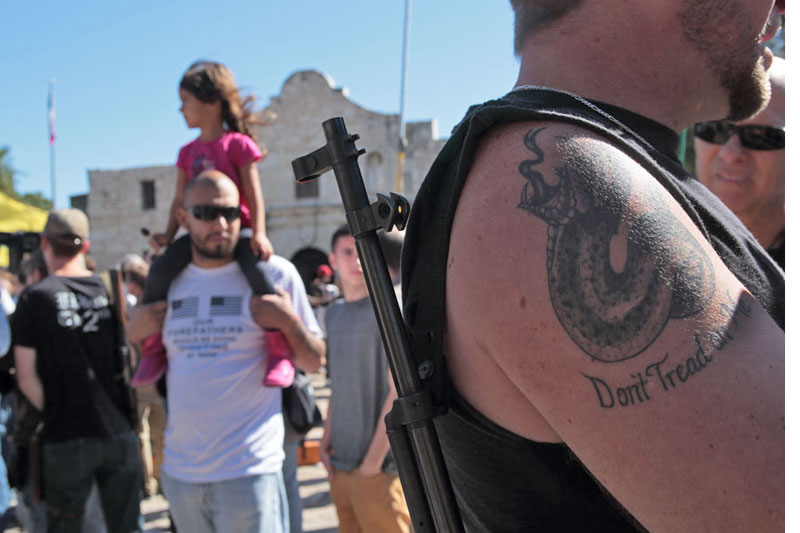
Remember the Alamo (Differently)
In Texas, the effort to stop white supremacy should include dismantling the racist mythology of the Alamo.
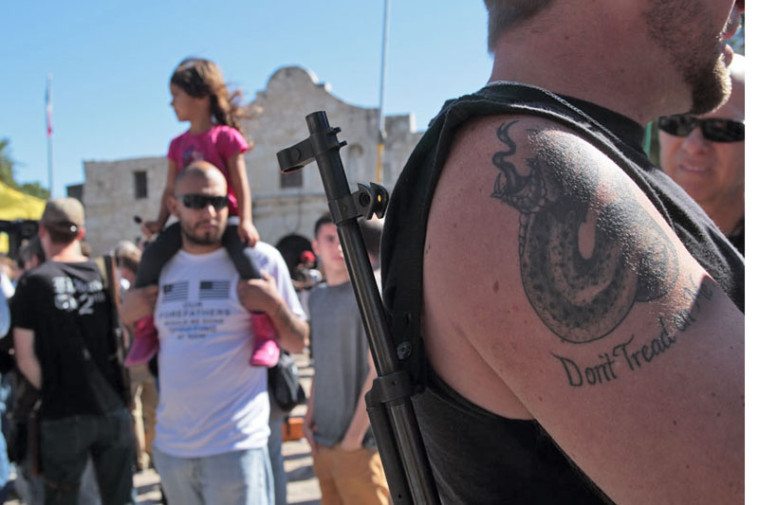
In the wake of the terrorist attack in Charlottesville, the big question everyone is asking is how do we stop white supremacy? I think not teaching it would be a good place to start. And in the wake of the removals or planned removals of Confederate monuments in Texas and across the country this month, it’s high time we start rethinking other racist American monuments and the narratives that surround them. The Alamo should be in that conversation, too.
The Alamo is, after all, dedicated to the American fear of the Mexican body, of Mexican invasion, of Mexican agency that firmly and directly contested agendas of white supremacy in early 19th-century Texas.
The Battle of the Alamo, as we’ve internalized it in the American psyche, is almost never considered in the full context of facts surrounding the event. This is especially true of the fact that race had everything to do with Texas independence and with how we remember the Alamo.
As historian H.W. Brands has written, the Battle of the Alamo’s “contribution to the strategy of the Texas Revolution was nil or negative.” At best, it was “a military mistake of mythic proportions.” But it’s often taught as a watershed moment in Texas history — a parable about white heroes pushed to their limits by a tyrannical Mexican federal government.
Tropes of honor, pride and liberty are explored through anecdotes like William Travis’ line in the sand or Davy Crockett’s brave death (it’s debated whether he was killed in battle or executed for surrendering in a cowardly manner), or the brazen sabotage of Mexican cannons by stealthy Texian defenders against sleeping (read: “lazy”) Mexican soldiers. White martyrdom in the fight against tyranny is often central to these anecdotes, and this is supposed to be the basis for Texan identity. One of my favorite mistakes from an illustration in a seventh-grade textbook was the Gadsden flag flying over the Alamo. (“Don’t Tread On Me” was a slogan used during the American Revolution).
But the hard facts are almost never given for context: that race had everything to do with Texas independence; that before the supposed “tyranny” that spurred the Texas Revolution due to the Anglo population’s fallout with the 1824 Mexican constitution, future Alamo hero James Bowie was already conspiring to overthrow the then-Spanish government in Texas as part of the Long Expedition in 1819; that private white supremacist armies regularly attempted to declare independent republics within Spanish (and subsequently Mexican) Texas to take land away from the “lesser peoples”; that after the Battle of the Alamo in 1836 there was literally a secret society dedicated to destabilizing and financing wars in Latin America to then incorporate those acquired lands as slave states to hedge power against free states in the North; that Sam Houston, the man who transitioned the Republic of Texas into the United States, subsequently introduced a resolution into the U.S. Senate for the “United States to declare and maintain an efficient protectorate over the States of Mexico, Nicaragua, Costa Rica, Guatemala, Honduras, and San Salvador.”
What ensued from decades of interventionist policy was the supposed great battle of the Alamo: Thirteen days of resistance from 182 antifederalist Texians against 1,800 Mexican troops, resulting in the complete massacre of Anglo Texians by Mexican forces who eventually scaled the walls in an invasion of the former mission to restore order. As it’s taught, the battle supposedly turned the tide in the movement for Texas independence.
But as a native Texan of Mexican descent (and citizenship), the story always struck me as odd. Of course, there was a racial element to it, but beyond that I also wondered why any of us would study a battle that was so strategically insignificant, that was one of the most thorough military defeats ever, and that bore no small resemblance to the 1993 Waco siege, in which more than 100 Branch Davidian members staged a standoff with the federal government for 51 days. In an eerie parallel, just as William Travis gave soldiers unwilling to die beside him an out with his famous line in the sand, Koresh allowed certain members to leave the compound before more than 900 law enforcement officials descended on it and a fire killed everyone inside.
Clive Doyle, former spokesperson for members of the Waco Branch Davidians and one of the survivors of the compound fire, has said himself: “People have likened Waco to the Alamo and said it was a wake-up call for Americans about their government, but wise people don’t go out and rectify that with terrorist acts.”
It didn’t occur to me at the time that the ideas celebrated in the curated narrative of the Alamo (anti-tyranny, anti-federalism, pro-guns, religious freedoms) were undeniably echoed in the rhetoric surrounding the Waco massacre itself and, indeed, in the reaction of white supremacists and white terrorists who were deeply moved and felt compelled to act in reaction to the Waco siege.
Anti-tyranny, anti-federalism and a general anxiety about the erosion of freedoms were part of Timothy McVeigh’s radicalized patriot movement ideology that led to his desire for martyrdom. Most recently, we’ve heard these echoes again in events such as the Cliven Bundy standoff and the rhetoric of the various militia groups that have multiplied in recent years and in places like Charlottesville.
We hear echoes of the Alamo, too, in Trump’s call for a border wall not unlike that behind which the Alamo defenders fought. It’s no secret that demographic and cultural change is a major concern for Trump voters, white supremacists, various militia groups and even Trump himself. Rhetoric referring to a perceived brown invasion was central to his campaign and is now integral to policy being adopted by the Republican Party today.
Deportation cases have increased as ICE agents have been deployed to increasingly and indiscriminately deport brown bodies from American streets. The Trump administration has curtailed immigration from certain predominantly Muslim countries. And my native Texas has passed a “show-me-your-papers” law that will allow police to ask people who’ve been detained — not just arrested — to prove citizenship.
It wasn’t uncommon, year after year, in my early Texas public education to watch hours of John Wayne in The Alamo killing people who looked like me, who looked like my family.
Beyond the expulsion and exclusion of brown bodies via a wall, or the outright destruction of them via terrorist acts like what happened in Charlottesville or Charleston, it’s not a stretch to say, too, that “Make America Great Again” and the movement it represents are part and parcel of the same ideologies that drove the early land grab efforts in Texas. The “lesser peoples” now have this land and a voice in it; now we must take it back (even if by lethal force).
Already, conversations in Texas are turning violent on the matter of the value and place of brown bodies in our society, though this is nothing new to those of us who studied the Alamo in Texas schools. It wasn’t uncommon, year after year, in my early Texas public education to watch hours of John Wayne in The Alamo killing people who looked like me, who looked like my family. It took me about seven years until I realized, Oh, that’s the point.
None of this is to say that the Alamo itself should be dismantled; no one is disputing the significance of the historic Spanish mission. But it should be noted that the mythology we’ve built around the Alamo isn’t only widely skewed by omission of historical facts largely unexamined or untaught. It’s also designed to celebrate and revere some of the darkest ideologies that have shaped our American fabric: anti-federalism as linked to white terrorism, white supremacy, and the destruction of brown bodies at all costs.
We think of those ideologies as relegated to history, but they’re still very much alive in the American psyche. They resonate with the contemporary anxieties that have roots in the way we’re taught to remember the Alamo. If we want to move forward as a country, we have to rethink the false narratives we’ve built around monuments like the Alamo and honestly ask where they came from. The complexities of history are so much larger and more interesting than our prejudices. We have to critically think about our learned versions of history and examine why we feel the need to celebrate them. Dismantling our adulation for the mythology of the Alamo is a good place to start.
